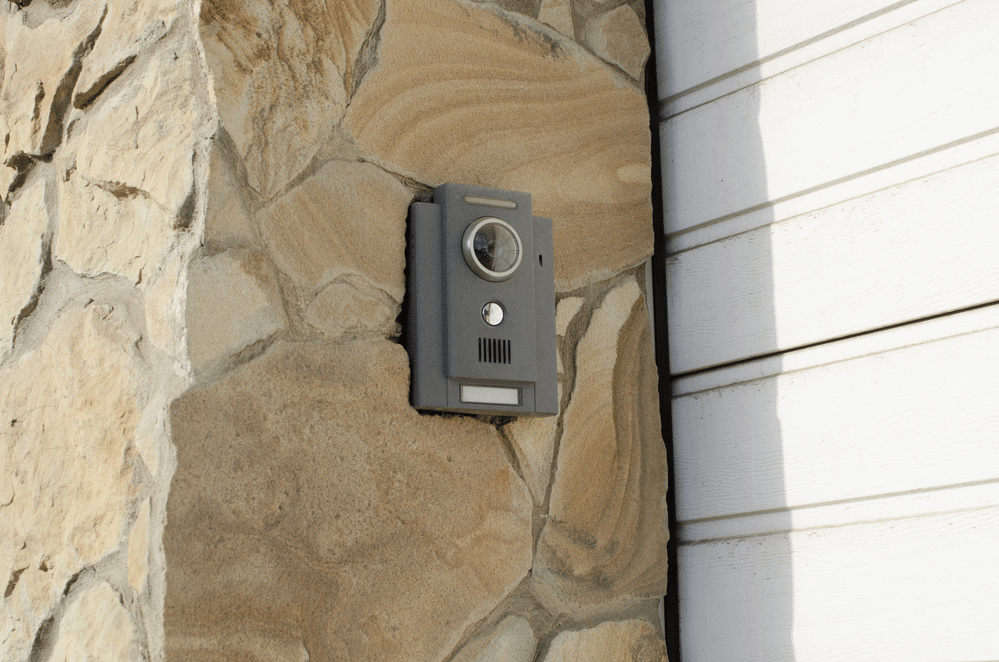Last Updated on
A palm router is a small and powerful woodwork tool, which lets you trim grooves and slots on wooden surfaces. It is mainly used to cut and shape edge profiles in DIY woodworking projects.
For instance, a palm router can trim a hinge mortise in a joinery project, making it easier for you to fit a hinge on a door. Since this power tool is entirely accurate in cutting different wooden surfaces, it is viral.
If you have never used a palm router, it might initially seem intimidating.
However, it is an easy-to-use tool that is quite versatile and might be suitable for your workshop. This post will show you how to use a palm router to make the most of your device.
Basic Parts of a Palm Router
Before diving deep into the nitty-gritty details, let’s go through the different parts of a trim router.
This will make it easier for you to understand how to use a trim router on woodworking projects. Here are the different parts of a trim router:
Router Bit
This is the cutting tool connected to the front part of a trim router and rotates at high speed to trim, cut, and shape wooden surfaces in woodworking projects. Router bits have different designs and can create different types of woodworking cuts. Not to mention, router bits have different sizes.
Some of the most common woodworking router bits include flush trimming bits and edge-forming bits. A flush trim bit is quite versatile and can be used to trim the edge of a laminate. A flush trim also works side-by-side with a template, making it easier for you to shape edges.
A router bit has two parts; the cutting edge and the shank. The sharp, cutting edge is the part that comes into contact with a wooden surface and trims it, while the shank is the long, slim, and round part that is connected to the router. Shanks have various sizes; ½” or ¼”.
Motor
Most routers come with a motor, which is encased inside the main unit. A motor powers a router and triggers the rotary motion of the router bit to cut woodworking pieces.
While motors power most trim routers, such motors have different voltage ratings. Not to mention, the voltage rating of a motor affects the overall performance of a trim router.
Trim routers with a high voltage rating are more powerful than trim routers with a low voltage rating.
Base
As the name hints, this is the bottom-most part of a trim router. It makes it easier for you to secure the router on different surfaces, offering you support as you are routing in a woodwork project. The base can also guide you when you are routing a particular workpiece.
Routers can be grouped into two categories based on the type of base that they feature. For example, a fixed-base router cannot be vertically moved as you are cutting, while a plunge router can be vertically moved while you are cutting. Not to mention, a plunge router is larger than a fixed-base router.
The base of most routers features a huge hole, which has enough space to accommodate router bits of different sizes.
Moreover, some routers might come with a sub-plate covering the rough router base to save wooden surfaces from nasty scratches.
Since the sub-base covers the router base, it protects the router from hard surfaces that might damage the base.
Collet
This is the part that holds the bit into position when it is connected to the main unit. It has a round hole where a bit can fit.
The collet of a trim router rotates at a very high speed and transfers the rotary motion to the router bit, making it easier for you to cut different surfaces.
Speed Control Mechanism
A speed control mechanism makes it easier for you to change the rotary speed of the trim router. The rotary speed of a trim router is measured in rotations per minute (rpm). Therefore, you can either increase or decrease the speed of the palm router, depending on the surface that you are working on.
Most palm routers come with a gauge that guides you as you are changing the speed. While the markings on the gauge might differ from one palm router to another, those markings still serve the same purpose. Also, palm routers may feature a user manual that gives you some insight into how you can change the speed of your palm router.
Bit Depth Adjustment Mechanism
This is a mechanism that lets you move the bit up and down to adjust its depth. Most palm routers feature a calibrated gauge that helps you set the depth of the router bit.
Step by Step Guide on How to Use a Trim Router
Step 1: Wear Protective Gear
For starters, you have to wear protective gear before you start using a palm router. Examples of such gear include a pair of safety goggles and earmuffs.
Apart from that, you can also wear a woodworking apron if you don’t want the wooden bits to get on your clothes.
Step 2: Attach the Bit to the Router
While installing a bit into a router might seem challenging, this process is quite easy.
Before you start this procedure, unplug your palm router from the power supply to minimize the risk of any injuries.
To access the collet easily, you have to detach the base from the main unit. Most trim routers feature a removable base, making it easier for you to detach it from the main unit.
Once you remove the base, you will be able to access the collet. First, insert the shank of the router bit into the collet.
You have to be quite keen while inserting the shank into the collet. Make sure that you insert the right length into the router.
Slide the whole shank into the collet, then slide it out slightly from the collet: slide-out ⅛ inch or ¼ inch of the shank from the router.
If you don’t insert the shank using the right technique, the bit will not function effectively. For instance, if you place a small part of the shank into the router, the bit will wobble while rotating.
You have to tighten the nut once you finish inserting the bit into the router. Since trim routers have different designs, the tightening mechanism might differ from one router to another.
Some routers might come with a spindle lock that secures the shaft in one position.
However, in some models, you have to use two different wrenches to secure the bit shaft into one position.
Step 3: Adjust the Depth of the Trim Router
Adjusting the depth of the trim router makes it easier for you to make an accurate cut on a certain surface.
Use the depth adjustment mechanism to move the bit to your preferred depth. Once you adjust the router’s depth, place it on the edge of your wood workpiece and check whether you have adjusted to the right depth or not.
Step 4: Connect It to a Power Source
Once you finish adjusting the router’s depth, you have to connect it to a power source. So, again, keep it close to the surface that you are working on.
Also, make sure that the cord is passing through a dry surface. This minimizes the risk of any injuries that the power cord may cause.
Step 5: Cut the Edges of the Workpiece
To get high-quality cuts, you have to use the correct cutting technique while routing a certain piece of wood.
The router bit rotates in a certain direction (clockwise) while cutting a certain piece of wood. So if you are planning to use a router to cut a certain piece of wood, you have to move it against the bit’s rotation.
For example, if your router bit rotates in a clockwise direction, you have to move the router bit against that motion; from the left side of the workpiece to the right side of the workpiece.
Since a router is mainly used to trim edges in woodworking projects, we will show you the basic cutting techniques for routing.
Routing is a simple cutting process that makes it easier for you to trim and shape wooden edges.
- Place the plank of wood that you are planning to cut on a sturdy surface like a workbench or a table.
- Once you place it on the table, rest the base of the trim router on the edge of the workpiece to guide you as you are routing the workpiece. The sharp router bit should come into contact with the face edge.
- Check whether the depth of the bit is sufficient enough to route the workpiece. Make sure that you cut the workpiece from the end grain to prevent tear-out.
- Press the trigger, then slide/pass the trim router along the edge of the workpiece from one end to another in a straight motion.
- While you can flip the wood workpiece after you trim cutting one side, you should not change the direction of the cut. Maintain the direction of the cut and let the base guide you.
Moreover, if you plan to trim a deep groove, you have to slide the trim router multiple times on the edge of the workpiece.
If you want to get familiar with the cutting technique, you must practice with a wooden plank before you trim on your workpiece.
Use a Router to Trim Wooden Surface
Trim routers are power tools that can be used in different projects. For example, you can use it to trim a door, a laminate, shelves, and cabinets. However, you have to use the right technique while trimming different workpieces with a router. Ensure that you place it on a sturdy table and know how to use a palm router before you get started. Learning about the various hand router uses means you will be able to make the most of it.
Did you find this article helpful? Do you have other tips you’d like to share when using a palm router? Let us know in the comments!
Ian loves everything that revolves around the home improvement niche. He loves trying out new home appliances. He has also handled a lot of equipment and has a lot of insight. Plus, he’s worked on various home improvement projects that became a success.
If Ian isn’t busy working on his latest project, you can find him reading up about another one!



